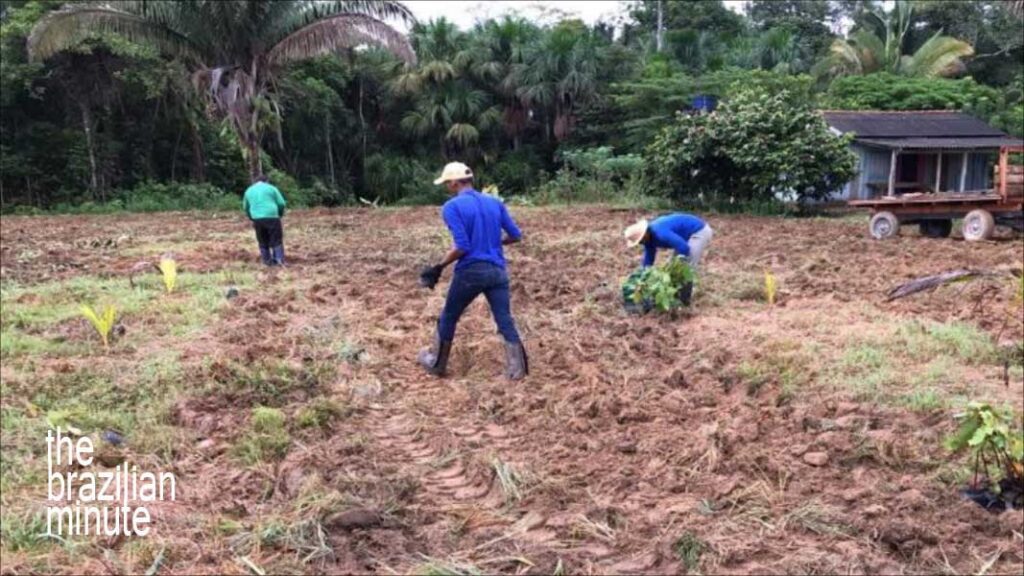
Conservation and emerging technologies are touchstones for Brazil’s 2030 challenge.
Brazil’s low-carbon economy is well established, placing it among the best-performing nations worldwide.
This series was presented by the Consulate-General of Brazil in Chicago and the Brazilian Foreign Ministry’s Cultural Department.
In celebration of Brazil’s Bicentennial year, 1822 – 2022
This week’s Brazilian Minute: Brazil’s Low-carbon Economy
Catch up with other Brazilian Minute episodes you may have missed!
Script from Audio:
Brazil’s low-carbon economy is generating low greenhouse gas emissions. And when it comes to net-zero strategies, Brazil ranks high, internationally.
Brazil is unique among industrialized nations because most of its emissions come from land use, not energy use.
Brazil’s approach relies on its abundance of natural resources, which are used responsibly to achieve this standard. Natural gas, wind and solar, and hydroelectric power all play their role.
Fossil fuels make up half of Brazil’s energy matrix. That’s much lower than the G20’s average of 81%. Renewable sources make up 46% of Brazil’s energy mix, far greater than the G20 average of 10%.
Importantly, Brazil’s Green Growth National Program aligns economic growth with sustainable development toward a green, low-carbon economy.
Read and listen to new weekly episodes of The Brazilian Minute.

More on: Brazil’s Low-carbon Economy
Overview:
When it comes to low-carbon economies, Brazil is a pioneering leader.
From the earliest days of the environmental agenda, Brazil has recognized the enormous potential to act decisively.
Brazil’s natural heritage provides a road map for its achievements, and they are by no means trivial. 62% of Brazil’s national territory is native vegetation. The world’s largest water availability – 12% of the planet’s reserves – is found within Brazil’s borders.
Brazil’s electric energy matrix consists of 85% renewable sources. It is the second-largest producer of biofuels.
The term ‘Low carbon’ refers to less carbon dioxide in our environment. Carbon dioxide is a ‘greenhouse gas’. Subsequently, CO2 exists as a result of various activities.
Specifically, some of these activities are man-made, such as the burning of particular fossil fuels. CO2 exists through natural events, such as volcanic eruptions.
Brazil’s industrial sector understands the importance of its role on the international stage. By taking on the responsibility of managing low carbon emissions, Brazil sets a standard for the adoption of a decarbonized economy.
Several of Brazil’s signature industries have prioritized the reduction of gases that are harmful to nature. Many companies are implementing plans for better use of inputs and recycling to combat waste.
Less Is More
These policies are already generating impressive results. For instance, Brazil’s greenhouse gas emissions are reduced by nearly 40%. This is achieved through the reduction of deforestation, an important, ongoing process.
This is one example of Brazil’s commitment to expanding its low-carbon economy. Its strategy applies to several key industries, including agriculture, energy, and iron and steel production.
Goal-Driven Renewables
Brazil’s Low-Carbon Economy is goal-driven. Most importantly, the country has challenged itself to reduce greenhouse gas emissions by 43% no later than 2030.
Here are several steps Brazil is taking in order to advance its low-carbon economy.
Increasing its percentage of renewable energy sources via hydroelectric, wind, and solar power. Brazil’s current renewable energy mix is already near 45%.
For example, when it comes to non-hydroelectric renewable energy sources, increases grow from the current 28 to 33%. Sustainable biofuels/bioenergy growth to 18% and non-fossil renewable energy sources to 23% or greater.
Importantly, Brazil’s electricity sector will increase efficiency to 10% while promoting the positive aspects of its low-carbon economy. This includes clean technology advancements for industry and transportation.
2030 is also the target date for Brazil’s goal of eliminating illegal deforestation in the Amazon.
This process complements the reforesting of 12 million hectares of rainforest land. Additionally, Brazil expects to restore pasturelands totaling 15 million hectares, while enhancing 5 million hectares of multi-use land for agricultural use.
Music, Travel, Friends, and Fun! 2022 marks Connect Brazil’s 25th year.
Brazil’s Low-carbon Economy
Did you enjoy ’Brazil’s Low-carbon Economy’? If you did, why not join us at Connect Brazil?
Sign up for our emails on Brazilian music, travel, friends, and fun. Listen to our ‘always live’ streaming station and streaming music channels, always free. Visit us on Facebook, and Twitter, and browse our Lifestyle Directory for Brazilian events coast to coast.








